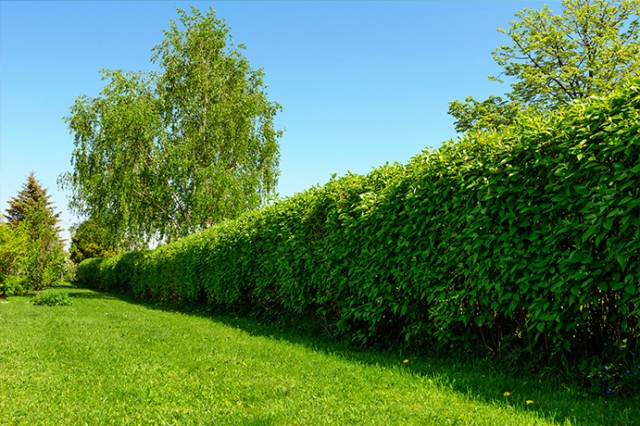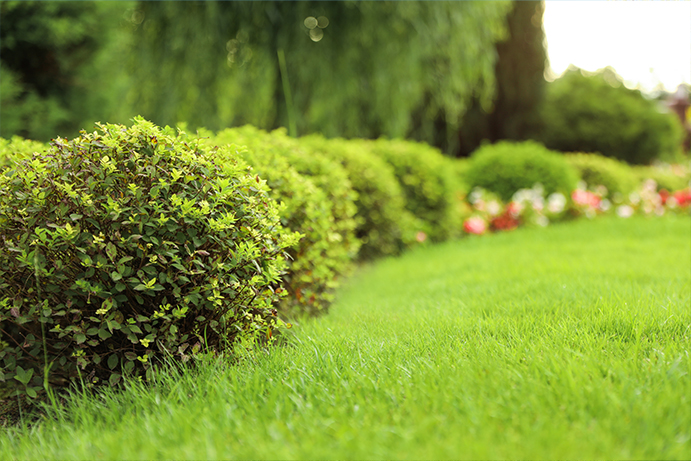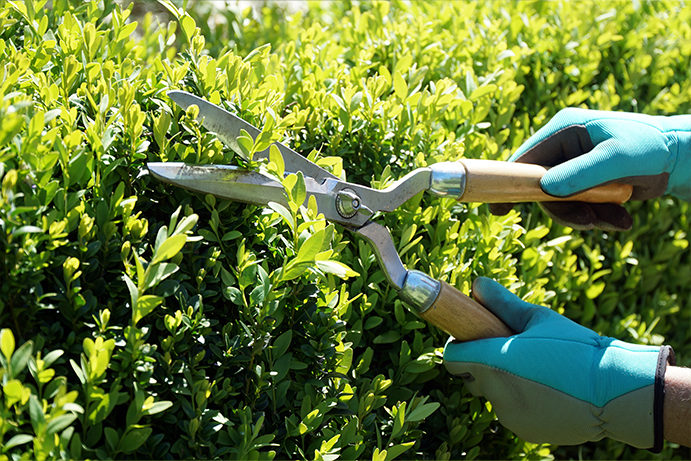Our Guide to Planting Hedges

Why plant a hedge?
As well as creating boundaries, hedges make important garden features that provide valuable privacy and give shelter to a wide range of wildlife, most notably the many species of garden birds that choose to make their nests in them. Because of this, and because boundaries can sometimes give rise to disputes between neighbours, you’ll find that careful planning, a considerate approach, and an awareness of a few key legal points will stand you in good stead when you’re thinking about planting a hedge.
Don’t be put off! A good hedge can make a valuable asset that you, your neighbours and the local wildlife will enjoy for a lifetime. First things first a boundary hedge is a joint responsibility, so involve your neighbour from the outset. Both parties need a clear understanding of what varieties will be planted and need to agree on who will be responsible for any pruning and trimming.
What do I need to know?
It’s important to remember that it is an offence under Section 1 of the 1981 Wildlife & Countryside Act to intentionally take, damage or destroy the nest of any wild bird while it is in use, or in the process of being built. So any pruning that might affect nesting birds must be done out of season. Choosing suitable varieties of hedges can consist of single species, and most formal hedges are planted in this way.

Which varieties are most suitable?
Evergreen varieties such as Yew, Holly, Box and Privet all work well – they can be pruned and trimmed into neat, attractive shapes. A mixture of species will give a more natural look and will provide a variety of interests – blossom, flowers and berries – through the greater part of the year. Requiring less maintenance than a formal hedge, mixtures will create a habitat for a greater diversity of wildlife, too. Native varieties such as Blackthorn, Hawthorn and Holly will all work splendidly.
How many plants?
As a general rule of thumb, work on the basis that plants should be spaced 30cm (12in) apart. A double row is recommended – this will make a denser and more effective hedge that will establish itself securely as it matures. Carefully following your established boundary or planting line, dig a trench that is 1 metre (40in) wide and at least 30cm (12in) deep. If drainage is obviously poor, it’s a good idea to work in some sand or gravel to prevent the roots of your new hedge from becoming waterlogged. When planting is complete, backfill your trench with good garden loam, firm in well and water generously to get the newly-planted hedge off to a flying start. Winter is considered the ideal time to plant a new hedge. Cut it back hard after its first year, to encourage bushy growth at the base and to prevent unnecessary strain on the young root system.

Shopping List Preparation: A fork, spade and shovel will be needed for digging a trench. A pickaxe or crowbar will be useful for dislodging any large buried rocks. Garden twine or polypropylene string should be used for marking out a planting line. Planting a hedge is heavy work – a wheelbarrow will be helpful throughout the project.
Drainage: Light gravel or bark chippings can be added to the soil to improve drainage if necessary.
Hedging Plants: The garden centre stocks a superb range of hedging plants, both evergreen and deciduous. Make your choice from such varieties as Berberis, Crataegus, Fagus, Ligustrum, Ilex (Holly), Lonicera nitida, Buxus (Box), Prunus, Rosa rugosa and Lavandula (Lavender).
You only have to ask! IF THERE’S ANYTHING you need to know about planting hedges, just ask a member of the Cherry Lane team. Our staff are friendly and knowledgeable, and they’re always delighted to advise you.
We also have plenty of gardening tools and watering must-haves online:
Gardening Supplies | Watering | Gardening Tools | Back to Home
Keep in touch!We would love to hear more from you! Follow us on social media and share your Cherry Lane buys with us!





